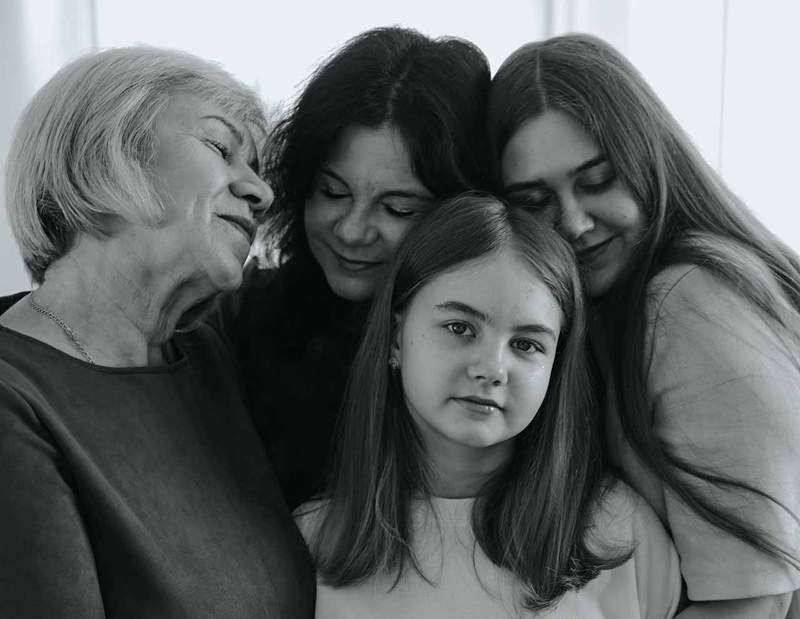The intensity creation technique in family therapy

- 1907
- 433
- Ryan Bogisich
Structural family therapy, a therapeutic intervention model developed by Argentine psychiatrist Salvador Minuchin, treats the family as an interactive entity with subunits, rules and limits and limits. One of the notable techniques used in this approach is the "intensity creation", which is based on Increase emotional involvement and commitment to therapy to overcome existing communication barriers in the family.
Content
Toggle- What is the intensity creation technique
- How the intensity creation technique works
- An example case
- References
What is the intensity creation technique
The technique of intensity creation in the structural therapy of Salvador Minuchin is a therapeutic strategy designed to enhance the emotional participation and commitment of a family members during the therapy sessions. His main objective is to facilitate effective and open communication, directly address problems and conflicts, and motivate family members to actively participate in the change process.
The "intensity creation" seeks to overcome what Minuchin calls "selective deafness fields", which refers to the tendency of some family members to ignore or avoid certain issues or problems. This may be due to several factors, such as entrenched communication patterns, personal beliefs and prejudices, and psychological defense mechanisms.
By increasing intensity of interactions during therapy, the therapist can Breaking these selective deafness fields and allowing previously avoided or ignored topics to be recognized and discussed. This can lead to greater understanding and empathy among family members, as well as changes in family dynamics and structures.
The intensity creation process must be handled with care and sensitivity by the therapist. It is essential to balance the need to directly address problems and conflicts with the need to respect the limits and emotions of family members. When used correctly, this technique can be a powerful tool to facilitate change and improvement in family relationships.
How the intensity creation technique works
The "intensity creation" in structural therapy is based on a set of interrelated strategies that are the following:
- Message repetition: The therapist will repeat a question or declaration in various ways until it is ensured that the family has completely understood its meaning. This repetition can act as a hammer that gradually breaks emotional or cognitive resistance, allowing family members to process and consider the ideas and emotions presented.
- Repetition of isomorphic relationships: In this case, the therapist uses several ways to communicate the same central message. These different forms, although they transmit the same fundamental idea, are presented in ways that reflect different perspectives or contexts. This can help family members recognize patterns and connections in their interactions and behaviors that could otherwise ignore.
- Time modification: This strategy consists in manipulating the rhythm and flow of therapeutic conversation. The therapist can accelerate or slow down the conversation in response to the emotions and reactions of family members. Accelerating conversation can increase emotional intensity, while slowing it can help the family process difficult information or emotions.
- Change of distance: This strategy implies manipulating physical space during therapy. The therapist can ask family members to move closer or further from each other to emphasize or relieve the intensity of their relationships. For example, asking a father and a child who feel closer can facilitate a more intimate or emotional conversation.
- Family pressure resistance: Although the therapist must respect the family, he also needs to maintain control over the direction and focus of the therapy sessions. This may involve resisting pressure to deviate from therapeutic objectives, despite intense emotions or requests of family members. The therapist is the session leader and must guide therapy towards the desired results.
Each of these techniques aims to overcome the "deafness threshold" of the family. This metaphorical term refers to the communication barriers that exist within the family due to the denial, avoidance or defense mechanisms. By increasing emotional intensity and involvement in therapy, the therapist can help family members listen, understand and finally address the problems that were not recognized before or avoided.
An example case
Imagine a family composed of two parents, Luis and Ana, and his teenage daughter, Laura. Laura has been isolation more and more and her school notes have come down. Although Luis and Ana are worried, they tend to avoid the issue, preferring to talk about "positive" things during therapy sessions.
To use the intensity creation technique, the therapist could ask a series of direct and specific questions to bring Laura's problem to the front and the conversation center. Instead of allowing Luis and Ana?". If they continue to avoid it, the therapist could repeat the question, perhaps in a slightly different way, to maintain attention on the subject.
If Luis and Ana begin to be uncomfortable or resist, the therapist could even more intensify the conversation by adding a deeper emotional layer: "Are you afraid of what is happening to Laura?".
By forcing Luis and Ana to directly confront his fear and concern for Laura, the therapist uses intensity creation to overcome his resistance to addressing the issue. This approach can help Luis and Ana recognize and process their emotions, which is a crucial step to be able to support Laura effectively.
It is important to note that, although this example shows how intensity creation can be used to break communication barriers, each family and each situation are unique, and the technique must adapt to the circumstances and specific needs of each family.
The structural model in systemic family therapy
References
- Minuchin, s. (1974). Families and family therapy. Mexico: Economic Culture Fund.
- Minuchin, s., & Fishman, H. C. (1981). Family therapy techniques. Barcelona: Paidós.
- Nichols, m. P., & Schwartz, R. C. (2006). Family therapy: concepts and methods. Madrid: Pearson.
- Camí, a. et all (2019). Socio -educational family therapy. Ed. Eleftheria. Barcelona
- Image: https: // www.Pexels.com/es-es/photo/white-y-negro-am-nina-mujer-15239332/

